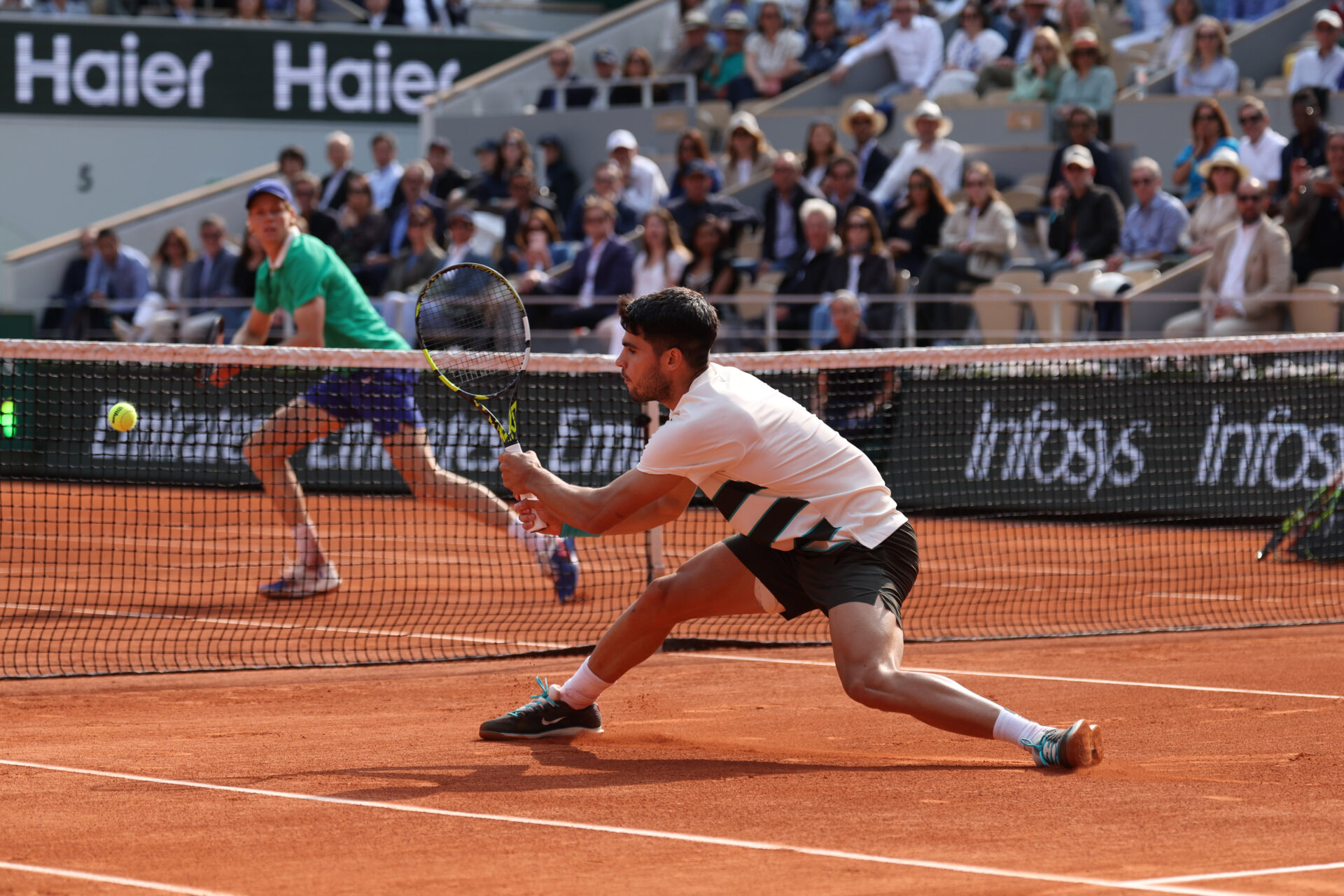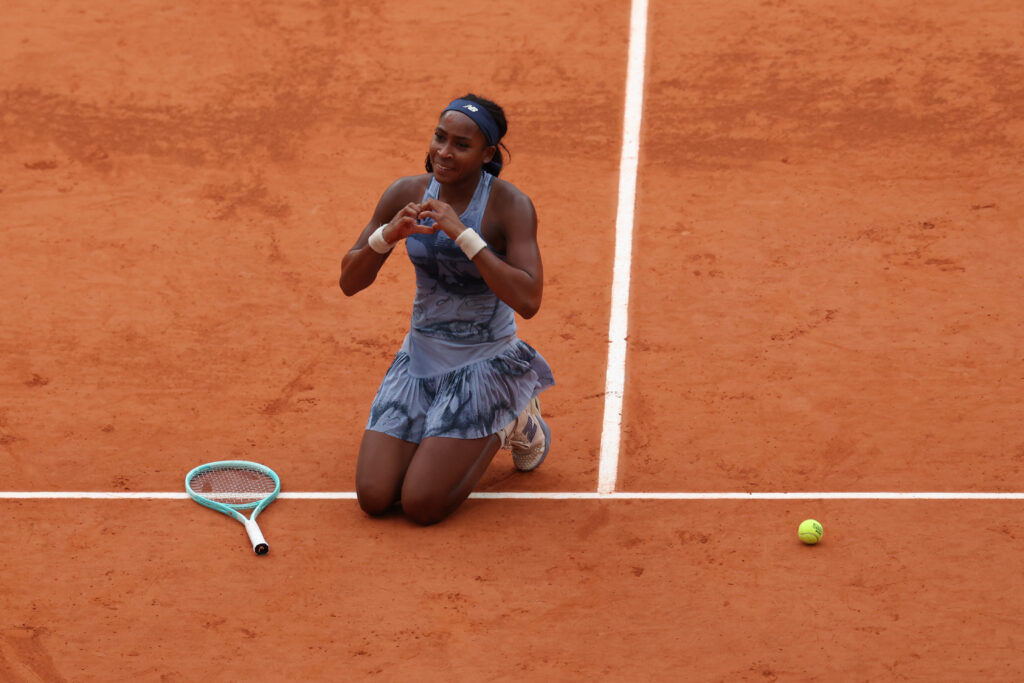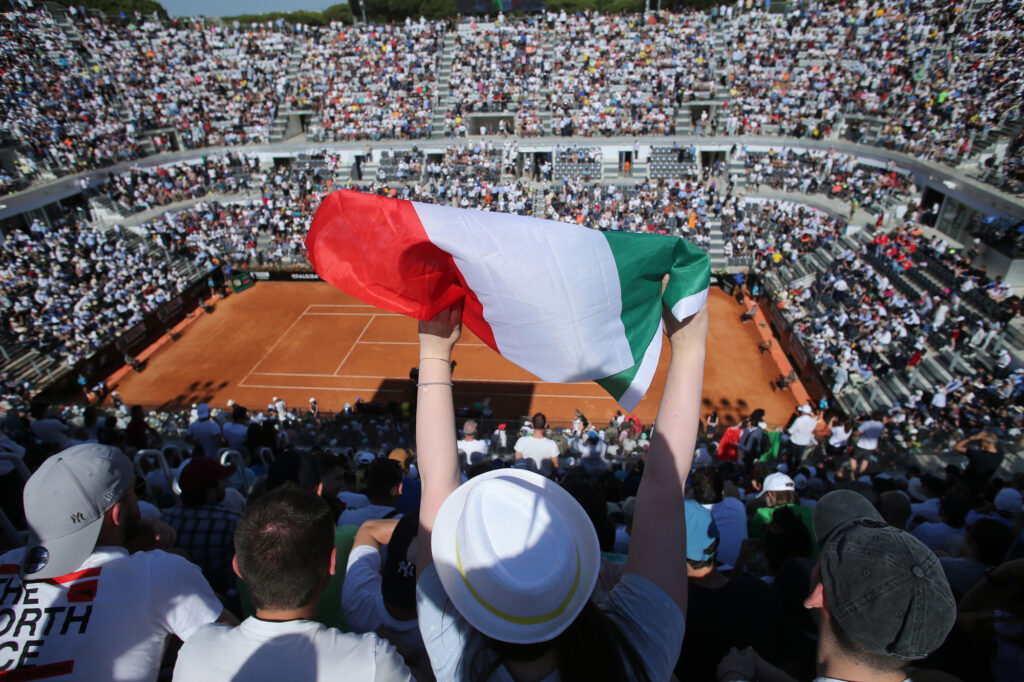Tennis Industry Digest #6: New era confirmed as Alcaraz wins five-set thriller in Paris

Final of Roland-Garros ended with a five-set battle between Sinner and Alcaraz — a match already tipped to become a classic. Photo courtesy of Rolex.
Key developments and trends shaping the tennis industry, June 2 – 8.
The Alcaraz–Sinner final was expected to be a battle — and it exceeded expectations, quickly entering the conversation among the greatest matches in modern tennis. Drawing comparisons to the 2012 Australian Open final (Djokovic–Nadal) and the 2019 Wimbledon clash between Federer and Djokovic, it delivered in both drama and quality.
Alcaraz saved four match points in the fourth set and denied Sinner the chance to serve out the match. In the fifth, it was Carlos who couldn’t close it out on his own serve. In the end, it all came down to a final-set super tiebreak: 4–6, 6(4)–7(7), 4–6, 7(7)–6(3), 7(10)–6(2).
More than just a classic, this match marked the emergence of a new era in men’s tennis — one increasingly shaped by Alcaraz and Sinner. Few would argue that anyone else in the game today plays at their level. Yes, tennis always leaves room for surprises — remember the Cilic vs. Nishikori final during the Big Three’s dominance? But now, the hierarchy is clearer, and the rest of the tour looks utterly helpless in comparison to these two. With Nadal retired and Djokovic stopped by Sinner in the semi-final, this final felt like a symbolic passing of the torch.
From a narrative perspective — and perhaps for the future of the sport — it might not be such a bad thing that Sinner didn’t lift his first major on clay. It’s now becoming clear: hard courts are Sinner’s turf; natural surfaces belong to Alcaraz. Their next challenge is to beat each other where they’re least comfortable — and that’s the storyline we’ll be following for the next few years.
Sabalenka unravels in Paris final despite dominant run
Arina Sabalenka had a strong tournament — she reached the final without dropping a set, including a statement win over Iga Swiatek in the semi-final, which ended the Pole’s three-year dominance at Roland-Garros.
But the final against Coco Gauff was a complete unraveling. Sabalenka made 70 unforced errors — a staggering figure for a major final, especially considering she had made just 105 across her previous six matches. This puts the scale of the collapse into perspective.
Gauff built a disciplined defense, but she was far from passive. The American stayed composed, avoided unnecessary risks, and repeatedly forced errors from Sabalenka, winning almost the same number of points while playing the cleaner match. Sabalenka’s frequent drop shots — a previously effective weapon — became rushed and predictable, reflecting her deteriorating decision-making.

In the post-match press conference, Sabalenka downplayed Gauff’s performance, attributing the result to her own mistakes rather than any tactical superiority on the American’s part. The response highlighted her ongoing struggle to manage expectations in high-stakes finals.
Roland-Garros sets viewership records in France and Spain
The epic clash between Carlos Alcaraz and Jannik Sinner captivated fans and drew a staggering 5.5 million viewers in France alone — the highest audience for a men’s match at Roland-Garros in 14 years. The five-hour, 29-minute final held audiences in suspense and immediately entered the ranks of the most-watched tennis broadcasts of the decade.
In Spain, Alcaraz’s victory became the most-watched sporting event outside of football. Second only to the UEFA Nations League final between Spain and Portugal, the match drew 1.15 million viewers on DMAX (11.8% share), despite the channel’s limited distribution. Including Eurosport 1, total viewership reached 2.2 million and a 22.8% market share.
One day earlier, the women’s final also delivered exceptional numbers. Coco Gauff’s win over Aryna Sabalenka attracted 3.15 million viewers on France 2, peaking at 5.1 million — with a 40.5% audience share during the closing moments. The data underscores the continued momentum in women’s tennis viewership.
These standout figures will undoubtedly draw increased attention from sponsors, especially as tennis audiences continue to skew younger. Gauff’s post-match activity on TikTok exemplifies how the next generation of players is helping the sport connect with digital-first fans.
WBD extends Roland-Garros rights to 2030, maintains full Grand Slam coverage in Europe
Warner Bros. Discovery (WBD) has renewed its European broadcast rights for Roland-Garros through 2030, extending its partnership with the French Tennis Federation (FFT) and reaffirming its position as the continent’s leading Grand Slam broadcaster. Coverage will continue via Eurosport and TNT Sports across Europe (excluding France), with TNT Sports remaining the exclusive broadcaster in the UK and Ireland.
The renewal ensures that WBD retains rights to all four Grand Slam tournaments in Europe. The company’s existing deals include Wimbledon through 2027 and the Australian Open through 2031.
For the tennis media ecosystem, this long-term consistency provides a stable platform for sponsor activation, cross-market audience growth, and year-round promotional alignment across all four majors.
Andy Murray honoured with namesake court at Queen’s Club
British tennis icon Andy Murray returned to Queen’s Club this week to take part in the official opening of the newly renamed Andy Murray Arena, formerly known as Centre Court, ahead of the 2025 HSBC Championships.
The renaming recognises Murray’s outstanding career and his impact on British tennis, following his retirement last summer. The three-time Grand Slam champion is a five-time singles winner at Queen’s and also captured the doubles title in 2019 alongside Spain’s Feliciano López.
For the HSBC Championships and British tennis more broadly, the move reinforces the tournament’s heritage positioning and aligns with a growing trend among events to embed legacy-driven branding into venue identity.
Wilson launches first performance tennis shoe exclusively for women
Wilson Sporting Goods has introduced The Intrigue, its first high-performance tennis shoe designed specifically for women. Developed with direct input from female athletes, the shoe combines the agility and cushioning of a running shoe with the stability required for competitive play.
The model was created in collaboration with Wilson athlete Marta Kostyuk, who played a key role in shaping its fit and functionality. “With Wilson, we wanted to create something that helps women move faster and more agile — and still look great,” Kostyuk said.
Wilson describes the shoe as a response to the evolving speed and physicality of the women’s game, positioning Intrigue as a product that blends technical innovation with style. The launch reflects a growing emphasis within the industry on performance footwear tailored to the biomechanics of female athletes.
USTA expands grassroots strategy with $5M micro-grant initiative
The United States Tennis Association (USTA) has launched a new micro-grant program designed to support grassroots tennis development across the country. The initiative includes a $5 million funding commitment over the next five years, reinforcing USTA’s long-term focus on community-level growth.
This new program complements the $10 million investment announced earlier this year to expand USTA’s Facility Grants Program, which targets improvements in local infrastructure.
Micro-grants will range from $2,500 to $10,000 and may be applied toward equipment purchases, local activations, event organization, and the creation of new Community Tennis Associations (CTAs) in underserved areas. By lowering the entry barrier for local stakeholders, the initiative aims to widen the base of participation and strengthen the national player pipeline.
The scale and structure of the initiative may draw attention beyond the U.S., particularly among federations in Europe exploring ways to broaden access and participation through targeted community investment.
Starting in July, we’ll be publishing our Industry Digest monthly, giving us more room to go deeper, connect the dots, and show the trends shaping the tennis business. If it resonated — send it to a colleague who sees the bigger picture too.




